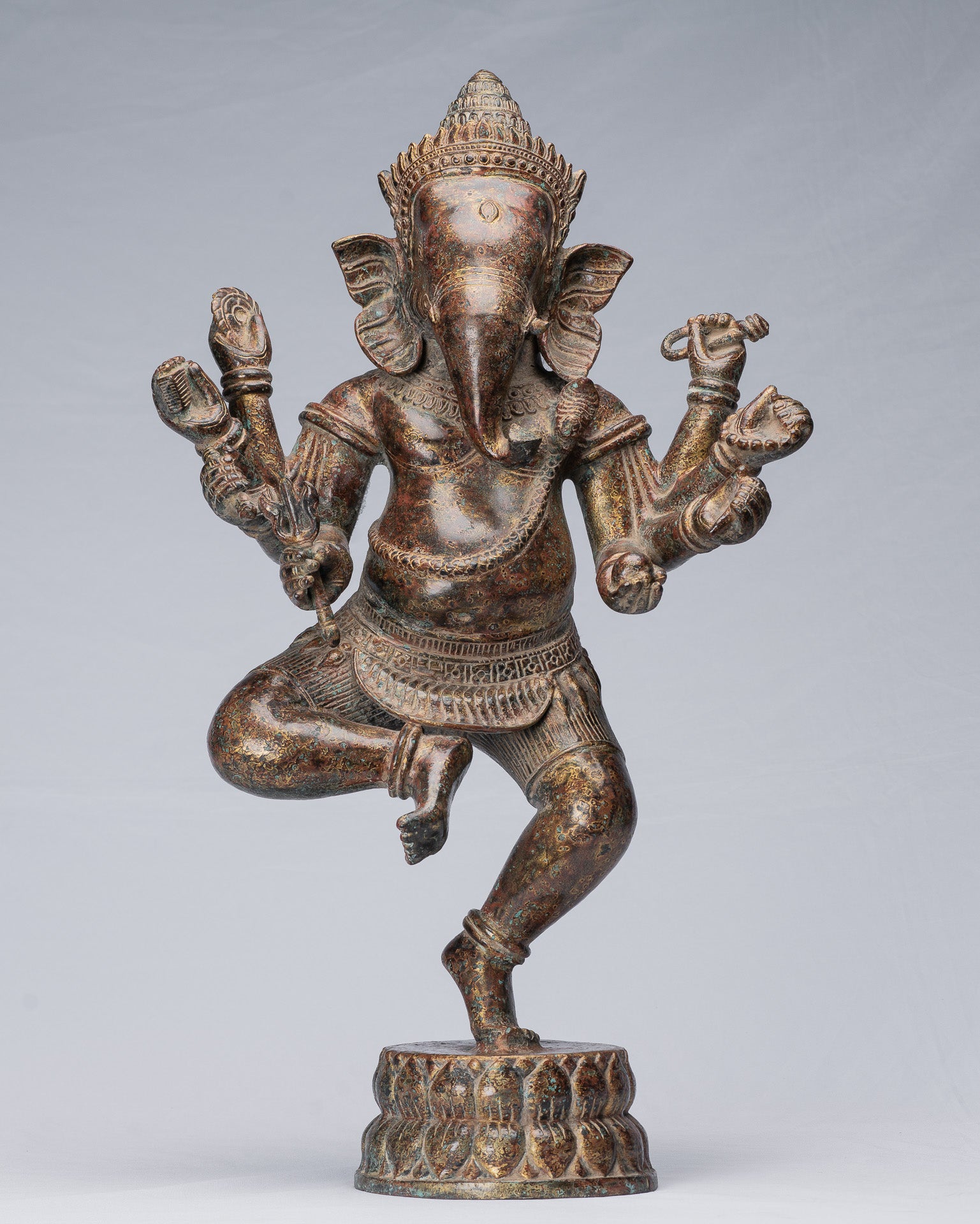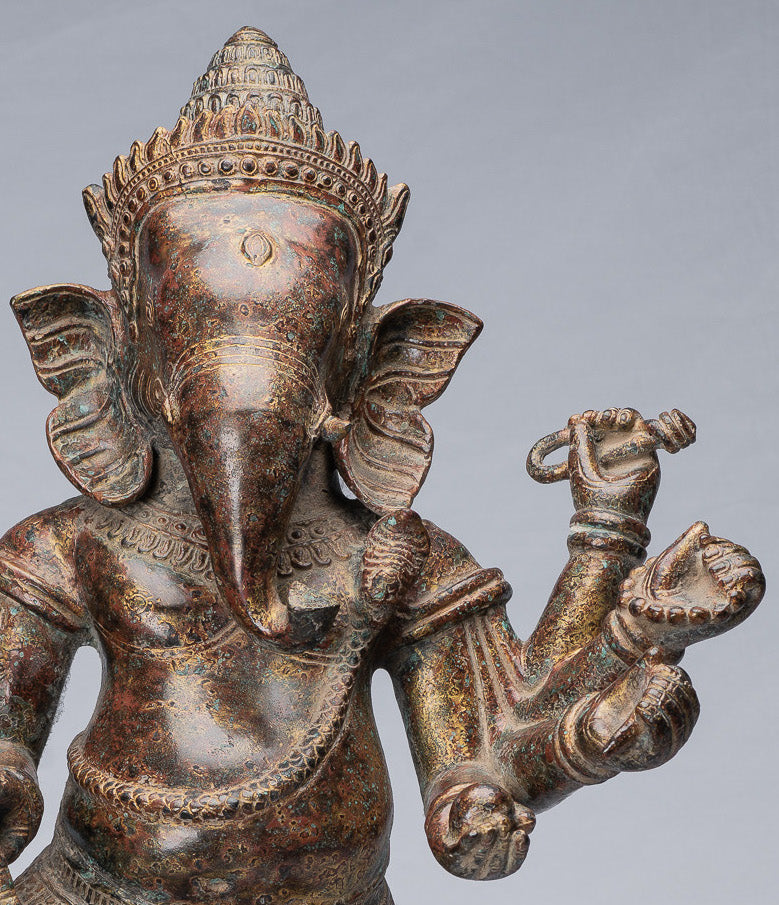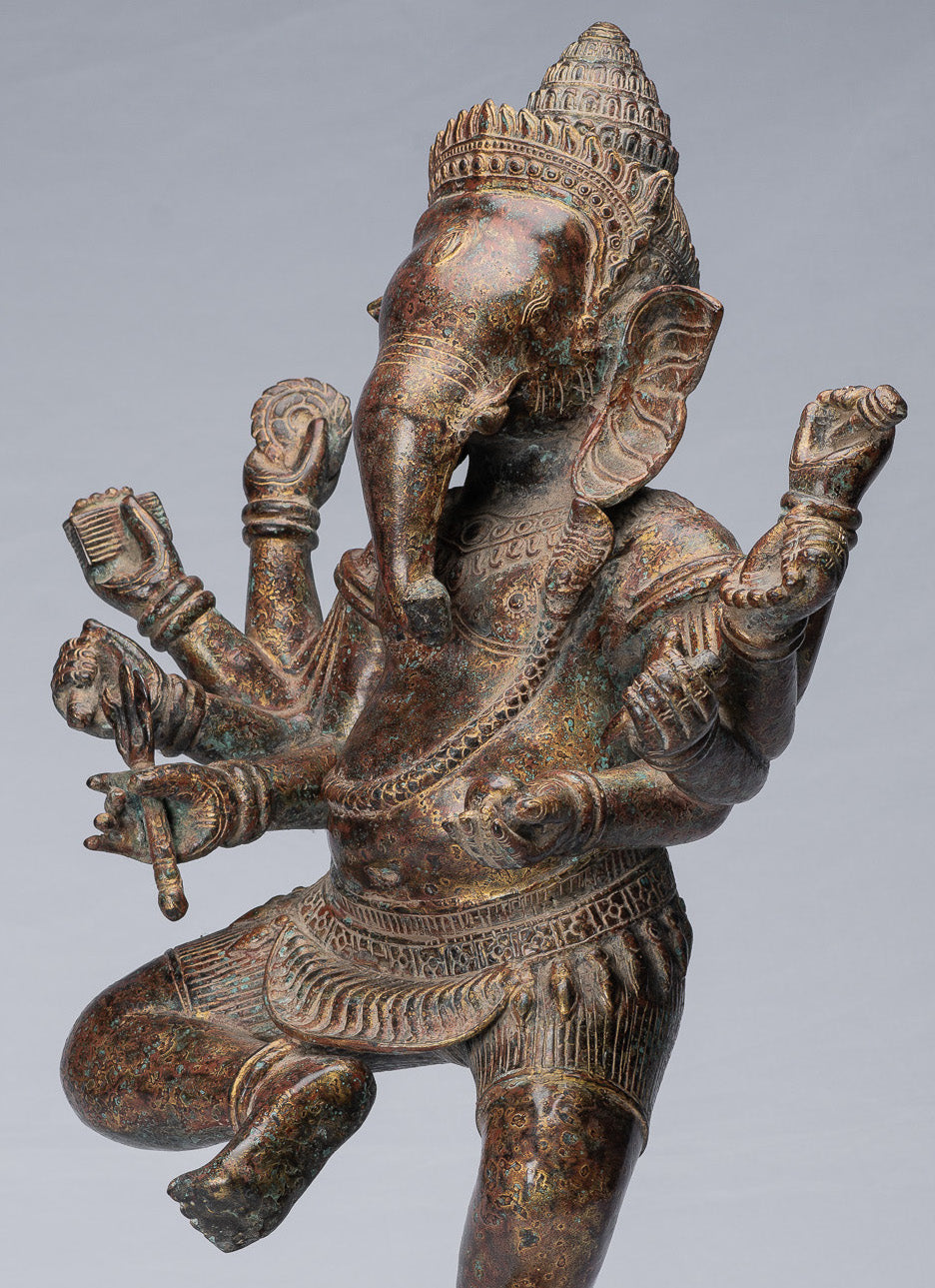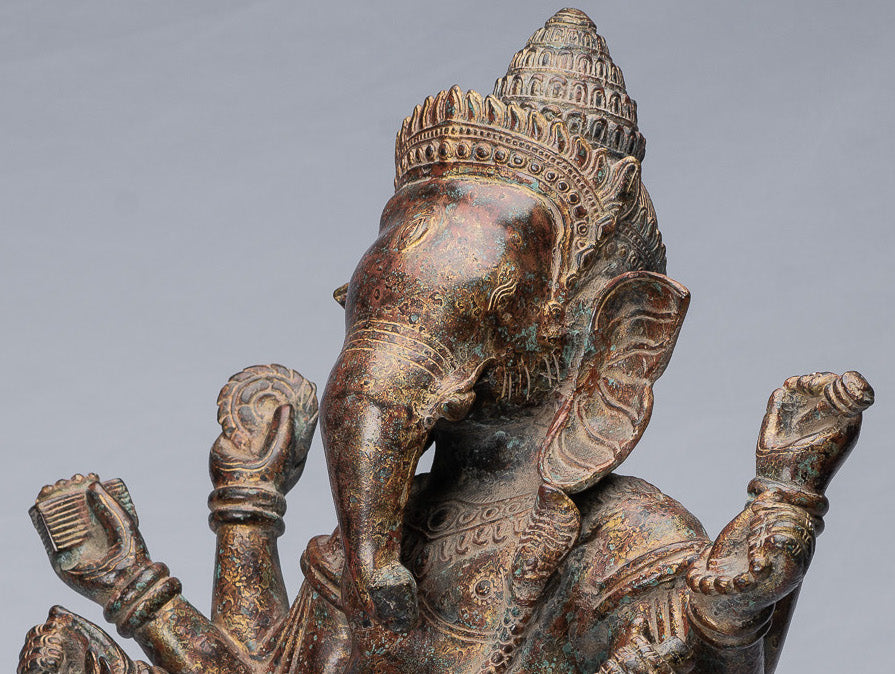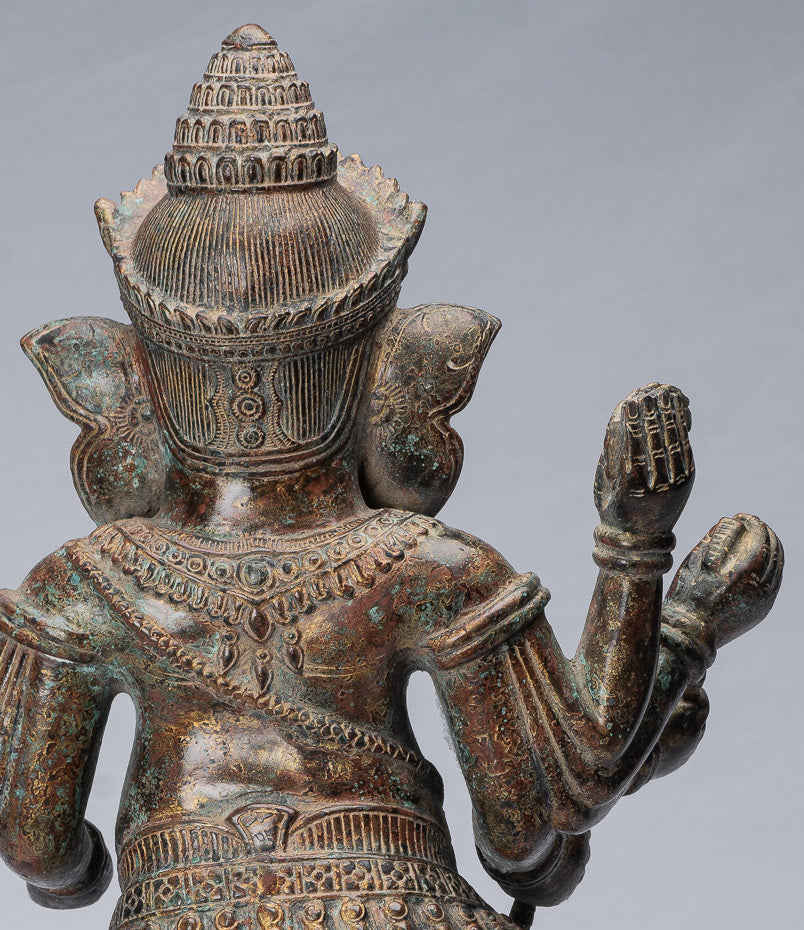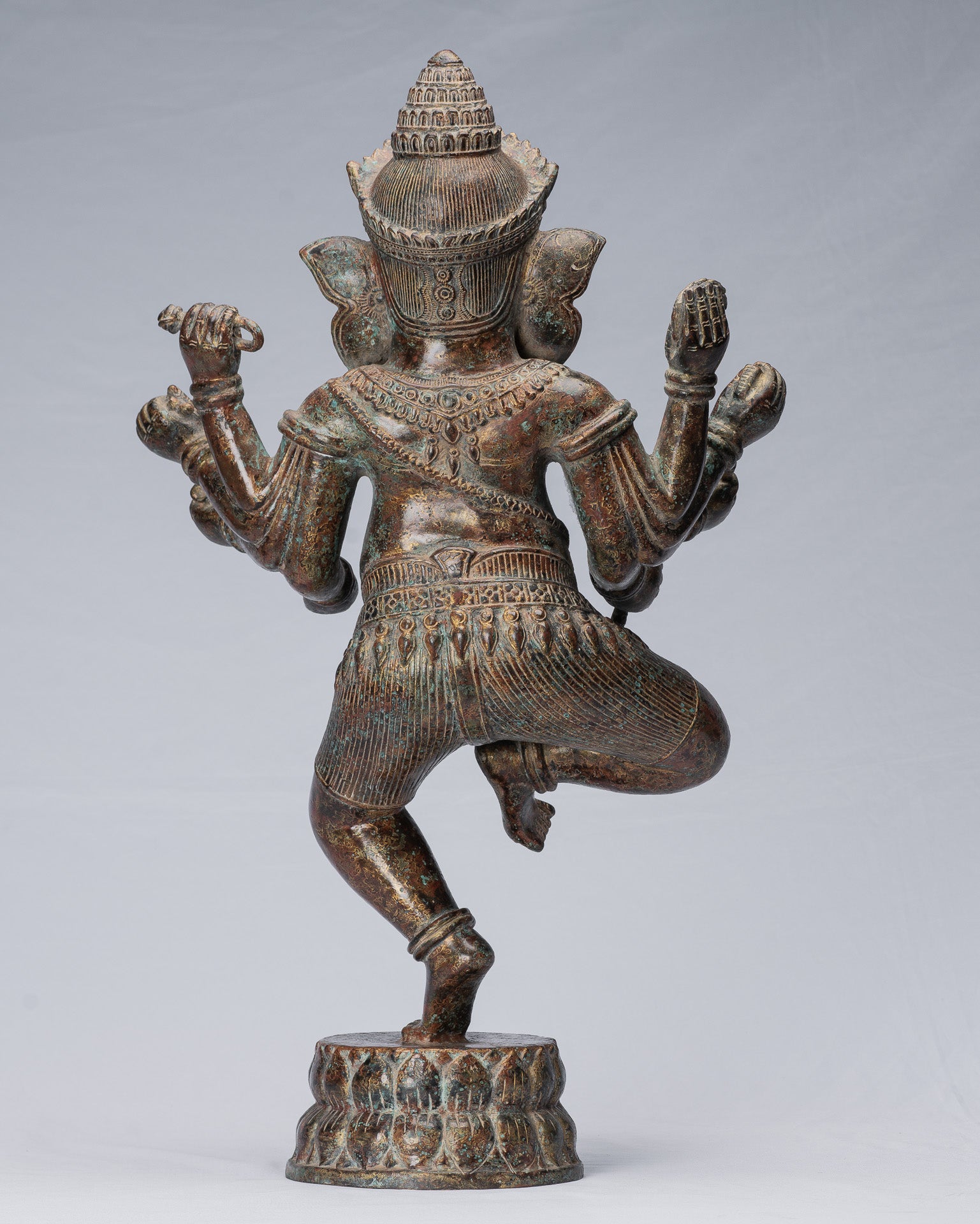-
Antique Khmer Style Bronze Dancing Ganesha Statue - 61cm/24"
Measures (Height) 61cm/24"
An antique Khmer style bronze dancing Ganesha. The distinctive patina of the piece is particularly delightful. Ganesha is the elephant headed son of Shiva.
In the vast pantheon of Hindu deities the Dancing Ganesha stands as a captivating representation of divine joy, rhythm, and cosmic harmony.
Dancing Ganesha epitomizes the cosmic dance, a sacred choreography that orchestrates the rhythms of creation and dissolution. The deity's dance symbolizes the eternal cycle of life, where each step in the cosmic ballet marks a transition, a transformation, and a celebration of the divine order.
He holds his broken tusk in one hand and a bowl of sweetmeats in another hand. He is also holding prayer beads and a holy sutra or manuscript.
The direction of Ganesha's trunk has symbolic meaning. Here the trunk turns to Ganesha's left. This signifies the direction for success in the world. It is a position associated with grihastas, or householders.
In his early forms in India, Ganesha was associated with fertility. Later he became widely revered as the Remover of Obstacles and more generally as Lord of Beginnings and Lord of Obstacles, patron of arts and sciences and the deity of intellect and wisdom.
Dancing Ganesha serves as an icon of resilience and triumph over obstacles. The rhythmic movements of the dance are a dynamic expression of the deity's ability to navigate the twists and turns of existence with grace, dispelling impediments and paving the way for spiritual growth.
The symbolism of Dancing Ganesha transcends individual devotion, embodying cosmic truths and universal harmony. The dance becomes a manifestation of the interconnectedness of all beings, reflecting the divine order that underlies the intricate tapestry of the cosmos.
Dancing Ganesha, with his rhythmic movements and divine grace, beckons devotees into the sacred space of the cosmic dance—a dance that encompasses creation, destruction, and the unending celebration of life.
The symbolism embedded in the dance of Ganesha invites practitioners to tread the path of joy, resilience, and surrender, ultimately finding themselves in harmony with the cosmic choreography of the universe.
As devotees engage with the profound meaning of the Dancing Ganesha, they discover not just a deity on the dance floor but a guiding presence inspiring them to dance through life's intricate rhythms with grace, devotion, and the joyous celebration of the divine order.
SATISFACTION GUARANTEE - We have been offering SE Asian Art for many years and are proud of the reputation we have developed for fair and honest listings. However, if for any reason, whatsoever, you are unhappy with your purchase please just let us know and we will provide a full refund. We want you to be 100% happy with your purchase.
-
The majority of orders will be shipped with DHL. This is a secure, express and fully tracked service.
Items less than 2Kg we typically ship using Royal Mail.
Once we receive your order we try to ship all orders the same or next working day.
Large and/or fragile pieces requiring palletising, specialist crating and/or extra packaging may take a little longer. Palletised shipments will be delivered curbside.
All orders over 35 GBP will be shipped free of charge.

-
We genuinely hope that all purchases delight.
However, if they do not, regardless of reason, we will refund all orders upon receipt of the unwanted item. Just notify us within 14 days of receiving your order that you wish to make a return and send the piece back to us with 30 days of delivery.
Let Us Help You Find The Piece You Desire
Let Us Help You Find The Piece You Desire
Thank you for arranging the shipping for this item. I am aware that I have got this piece at a remarkably good price, and I appreciate that very much. This item has a special meaning for me and will have a good home. I'll keep your gallery in mind in the future
Christine, Colorado Springs, CO, USA
The Ganesh is really great, wish I could keep it. It is a present for someone who is starting his own lab so Ganesh, the remover of obstacles seemed like the perfect thing.
Geeta, Baltimore, MD, USA
Thank you so much! As always, the Buddha arrived in perfect condition. You are truly the best and I really appreciate everything! Thank you again!
Evan, Des Moines, IA, USA


